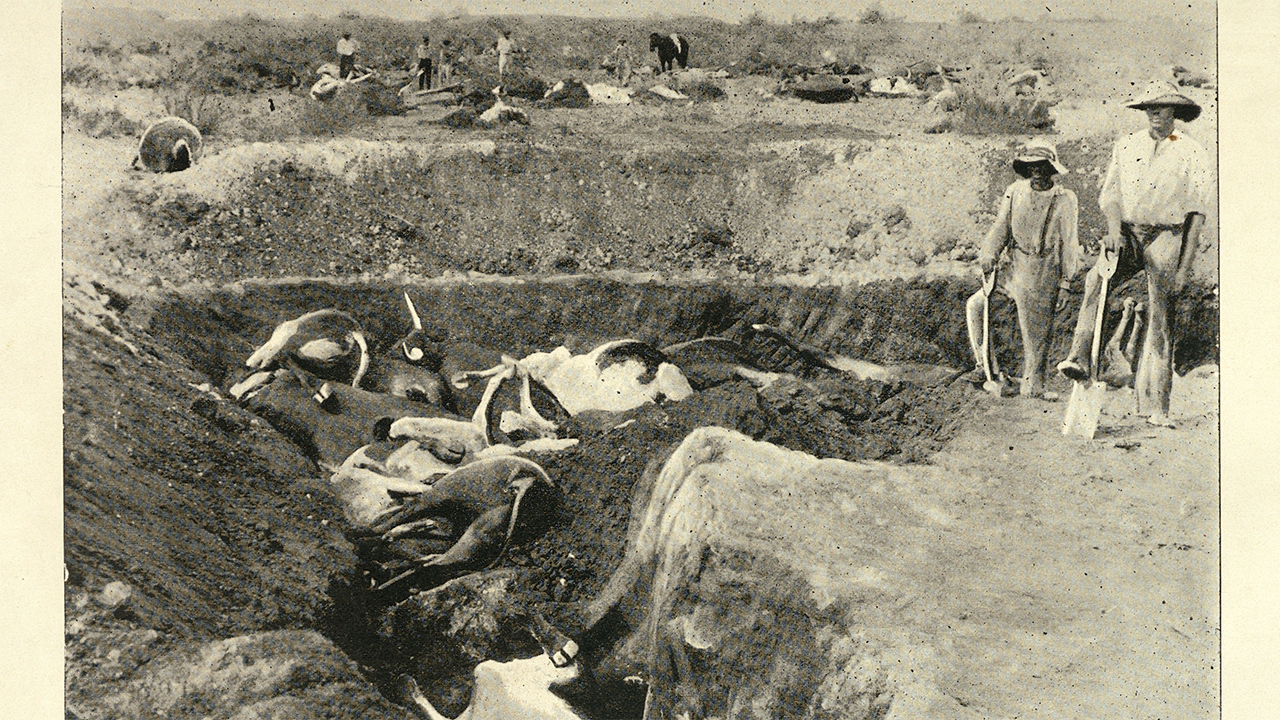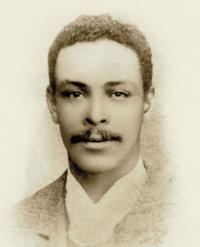
Recovering the Life Story of a Black Veterinarian Who Changed History in Southern Africa
When the cattle began dying in British Cape Colony in southern Africa, no one knew why. It was 1896 and germ theory — the idea that disease is caused by nearly invisible living organisms — was still relatively new.
Four years before these events, Jotello Soga, a well-regarded veterinarian, had warned that a coming epidemic threatened to destroy the region’s livestock.
“I make bold enough to say, that more than two-thirds of Colonial cattle will succumb to its ravages,” Soga wrote in an 1892 scientific journal article.
Soga, a Black man who was the first formally trained veterinarian from southern Africa, would transform veterinary medicine in the region. He played a critical role in containing the spread of rinderpest, a highly contagious and deadly disease also known as cattle plague that became the second disease in history, after smallpox, to be eradicated more than a hundred years after Soga’s passing. Soga’s work also became the foundation of veterinary toxicology in the region.
However, until recently, Soga’s story and accomplishments have largely been lost to history.
Diana Davis, a professor of history and geography in the College of Letters and Science at UC Davis, recently published a study of Soga’s life and career in: Notes and Records: The Royal Society Journal of the History of Science. This study is the first full-length academic article to describe the life of a once-influential figure who has been overlooked first because of prejudice in the Cape Colony region and the subsequent apartheid that divided the nation of South Africa between white and non-white people.
“There was a lot of excellent but informal literature about Soga and his life, like blog posts and pieces on the internet. Most of these weren’t as rigorously sourced as academic articles,” said Davis. “His story really needed to be told with proper archival sources and documentation.”
A life in two worlds in the Cape Colony
Jotello Festiri Soga was born in 1865 in Transkei, a region in the southeastern edge of the African continent. It was one of the two homelands for Xhosa-speaking people in Cape Province. Soga’s father Tiyo Soga was Xhosa, and he met his wife Janet in Scotland where he had gone to study as a Presbyterian minister.

(Public Domain via https://www.blackpast.org/
global-african-history/
jotello-festiri-soga-1865-1906)
The two were married a few months before they returned to Cape Province and together founded a Presbyterian mission. After Tiyo’s death, Janet took her seven children back to Scotland where all would be educated.
It was in Scotland that Jotello Soga would qualify as a veterinarian at the Royal Veterinary College in 1886 at the age of 21. Soon after, he returned to the Cape Colony and set up practice. By 1889, the colonial administration appointed him an assistant veterinary surgeon. He, too, married a Scottish woman.
Davis said that telling Soga’s story reveals some of the complexities documenting veterinary history. Davis is trained as both a geographer and a veterinarian, and her specialization is the field of “knowledge decolonization.” She describes this work as the process of taking apart ideas and stories that have been used to control people and resources, usually in the service of a colonial administration.
“Working with Dr. Soga’s story is an especially challenging task because he belonged to more than one ethnic or culture group and had to straddle multiple worlds,” said Davis.
Working with African cattle owners to stop rinderpest
It was straddling multiple worlds that became one of Soga’s strengths when rinderpest became a threat to the region’s cattle. Soga, who could speak Xhosa — his father’s first language — was frequently asked to go into the rural areas to “stamp out” the disease. Stamping it out meant killing every animal in the herd, infected or not. Soga himself helped to kill tens of thousands of cattle.
Cattle owners were hostile to the stamping-out policy. In one article, Soga wrote, “The natives absolutely refused to have their cattle shot, and would in no way render assistance; instead they threatened to shoot Dr. Hutcheon and myself.”
Soga enlisted the help of his brother, Alan Kirkland Soga, an attorney and labor agent, to help convince them to cooperate. The brothers invited Indigenous cattle doctors from several territories to try to treat cattle thought to be infected with rinderpest. Within a month, all the cattle died, leading many cattle owners to accept the government’s stamping-out policy.
Soon afterward, Soga brought the first rinderpest-infected cow to the mobile laboratory of colonial bacteriologist Alexander Edington, also Scottish. Soga assisted Edington in the early stages of developing what would later become an effective rinderpest vaccine.
However, the fight against rinderpest took a toll. Many documents describe a general decline in Soga’s physical and mental health. He retired from work in 1899 and died in 1906 from an accidental overdose of laudanum, a commonly used painkiller. Soga was 41 years old.
Recovering a buried history
It’s now estimated that rinderpest wiped out about 90% of African cattle. In the Cape Colony, Soga helped to change the course of the rinderpest epidemic in a period of about four years, saving tens of thousands of cattle and the livelihoods of their owners, both white and non-white. Soga also co-founded what would become the South African Veterinary Association.
However, it was soon after Soga’s death that his reputation began to be overlooked. In 1914, an influential white veterinarian, Arnold Theiler, began to rewrite veterinary history. He claimed Philip Viljoen, born to a Dutch settler family, was the first formally trained and qualified veterinarian in the region.
“They knew how important Soga's work was, especially in that four-year period, and it all got swept under the rug,” said Davis.
Soga’s disappearance from history and the prejudice in the region that caused it had real repercussions. Until the 1980s, there were no other formally trained Black veterinarians in the country. During apartheid, which formalized racial segregation and inequality into national policy in 1948, this meant that many Black South Africans could not get veterinary care for their animals. Today, said Davis, there are still not enough veterinarians in the country’s rural areas.
Davis said that documenting Soga’s story and contributions now is a critical step in undoing this kind of damage. She is hopeful that a documentary film about Soga’s life currently in production by filmmaker Jesse Lewis, will further share Soga’s story.
“Histories are where many people start their own trajectory,” said Davis. “Raising the profile of an important non-white veterinarian like Jotello Soga might make young people think, ‘I can do this too.’”
